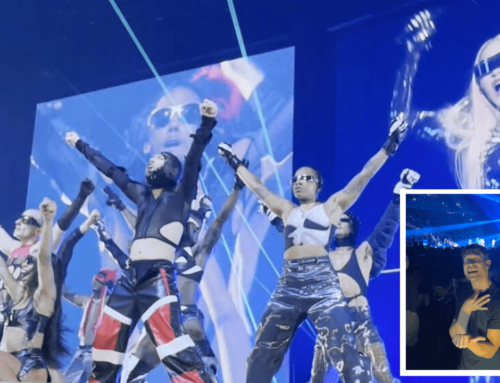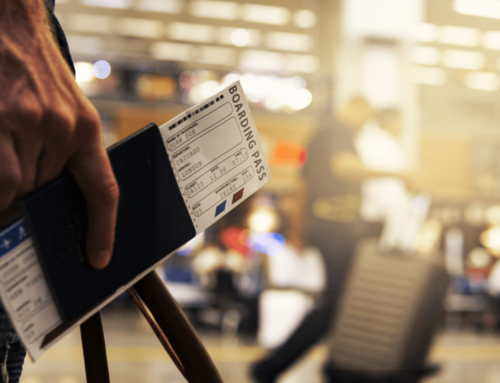Think “museum,” and the first things that come to mind are iconic T-Rex displays of your childhood, or heist and adventure movies (think: The Mummy Returns, Thomas Crown Affair, and National Treasure).
But unlike the relics inside, museums are evolving – just like the humans who create and visit them. Gone are the old days when only the elite could access museums. We remember the idea of exhibits being all “no touch, no photograph” spaces. Mid-pandemic, many people are hungry for meaningful connection in in-person spaces, including museums.
Today’s museumgoers don’t just want to fog up glass cases. All while they peer at ancient artifacts (under the glare of a watchful security guard, no less). Interactive, inclusive museums increasingly look for ways to foster human connection and curiosity. Just ask Tabitha Jacques, our trainer for the Deaf-Friendly Museum Training, deaffriendly Consulting’s latest offering in a growing suite of industry-specific training programs.
In an introduction module, Jacques recalls her art history undergraduate days. Spending countless hours seeing many hearing people enjoy tours at Washington, D.C. museums.
“I often found myself envious of these visitors,” recalled Jacques, who is Deaf. Then graduate school in New York City opened up new worlds.
“I was gobsmacked by the amount of ASL tours provided in NYC museums. I wondered why there were none in D.C., which has one of the largest populations of deaf people.”
The contrasting experiences inspired Jacques to set up ASL-led tour programs in D.C., eventually becoming appointed director of NTID’s Dyer Arts Center (which houses state-of-the-art galleries showcasing art by deaf students, alumni, and renowned artists).
In this new museum training, Jacques leads 5 modules for museum administrators and employees. She teaches simple, effective tools to create positive experiences for deaf and hard of hearing museum patrons.
Jacques presents the training in American Sign Language, with voice-overs and captions available for all content.
Access: Beyond mere ADA compliance, a value-add with “cultural bridges”
 First things first: are museums legally required to be accessible for disabled visitors? YES! The Americans with Disabilities Act requires museums of all sizes and budgets to be accessible to visitors with disabilities. Privately operated museums are required under the ADA public accommodations Title III. State or local government-run museums are covered under Title II.
First things first: are museums legally required to be accessible for disabled visitors? YES! The Americans with Disabilities Act requires museums of all sizes and budgets to be accessible to visitors with disabilities. Privately operated museums are required under the ADA public accommodations Title III. State or local government-run museums are covered under Title II.
Also, museums that receive federal funding must also follow Section 504 of the Rehabilitation Act.
Regardless of which category your museum falls under, the ideals that all museums share – information-sharing, visually engaging content, and cultural preservation – means that the law is not the main incentive for many curators to be accessible. Universal design is a huge value-add that makes your museum a much more enriching space for all people to visit.
For example, the one-hour, self-paced online museum training covers the recent museum trend to train and provide Deaf docents who, while not required under the ADA, act as a powerful “cultural bridge to understanding the needs of your deaf visitors,” said Jacques, who has also worked at National Postal Museum, Gallaudet Museum, Smithsonian American Art museum, and the Rochester Museum and Science Center.
The training empowers enrolled students to find and build upon that intrinsic value while programming more inclusive museum content, exhibitions, and events that appeal to all ages and abilities – including those who are deaf and hard of hearing.
Curating museums with Deaf docents, captioned exhibit videos, and more
The Coronavirus pandemic may have shuttered museums, but many have reopened with new purpose and energy. In early October 2022, the Biden administration announced it was re-establishing the President’s Committee on the Arts and Humanities, which disbanded five years ago.
A proclamation committed to “making the arts and humanities more accessible to people of every age and background, uplifting more voices, inspiring new generations, and showing the full power of our example as a great nation.”
That opens up exciting possibilities for the U.S. museums, which became a collective $17.95 billion industry in 2021. In five case studies based on real-life reviews from deaf and hard of hearing museum visitors, the Deaf-Friendly Museum Training highlights many access details that either made or broke a museum experience for deaf visitors: from effective signage, to the pitfalls of hiring unskilled, less-experienced ASL interpreters for tours.
It also covers realistic scenarios within this field, such as:
– What do I do if an exhibit artist refuses to caption their videos?
– Lipreading versus speechreading
– What does it mean to honor a “deaf space” in public ASL tours?
– What the heck is a Hearing Loop and T-Coil?
… and more
Are you a front desk clerk, museum curator, administrator, outreach coordinator, artist, or employee who designs, and programs museum events and exhibits? The time is ripe to create a deaf-friendly experience. Explore the simple, yet effective tools today at deaffriendlylearning.com.
BONUS: When you sign up for the Deaf-Friendly Museum Training, you’ll also unlock access to a Deaf-Friendly Sign Language Lesson: Museum Vocabulary, with Deaf trainer Guthrie Nutter demonstrating 35 of the most commonly-used signs in Museums from “Coat Check” to “Tour.”







